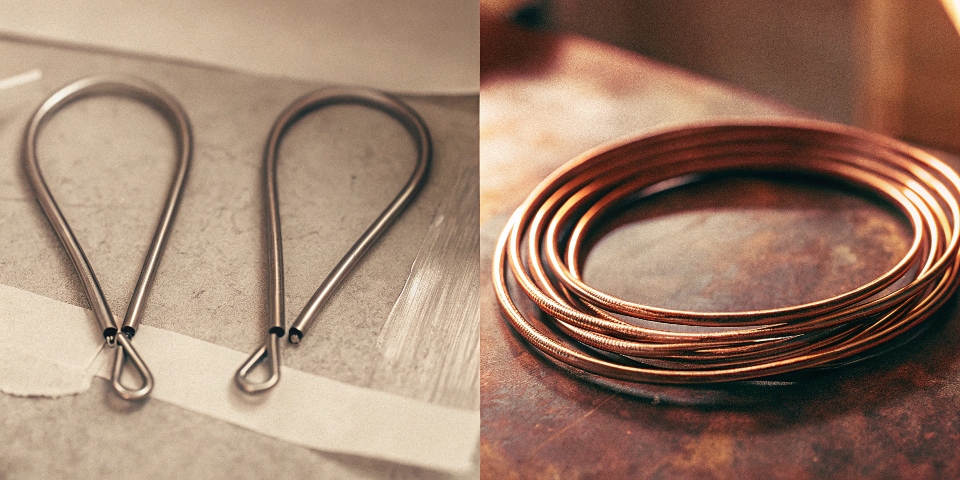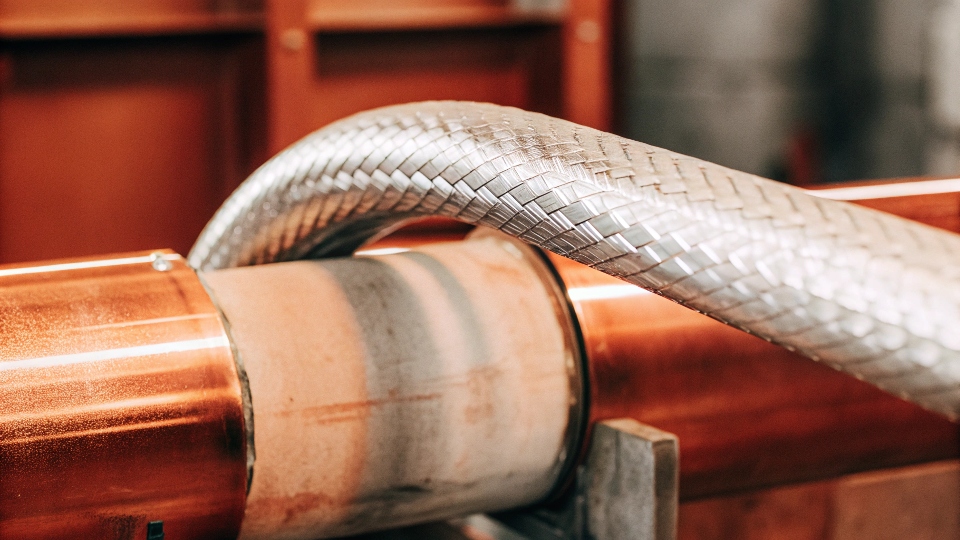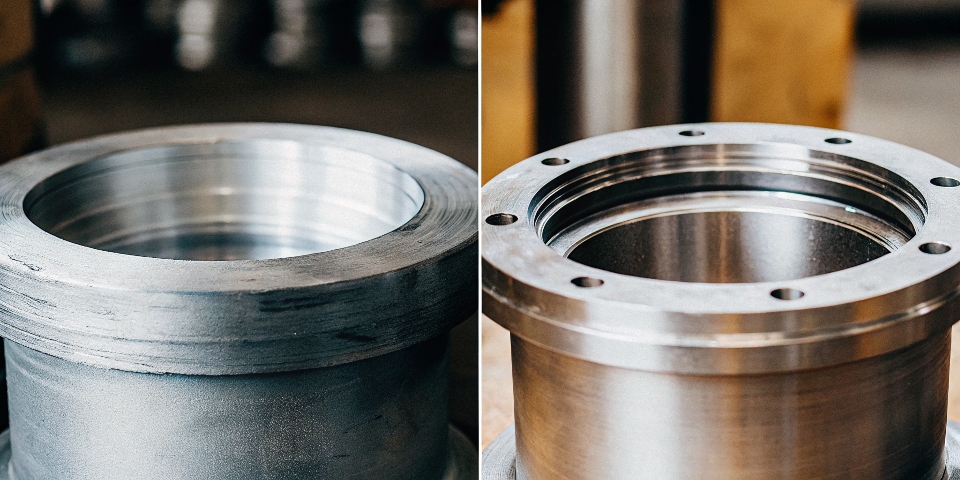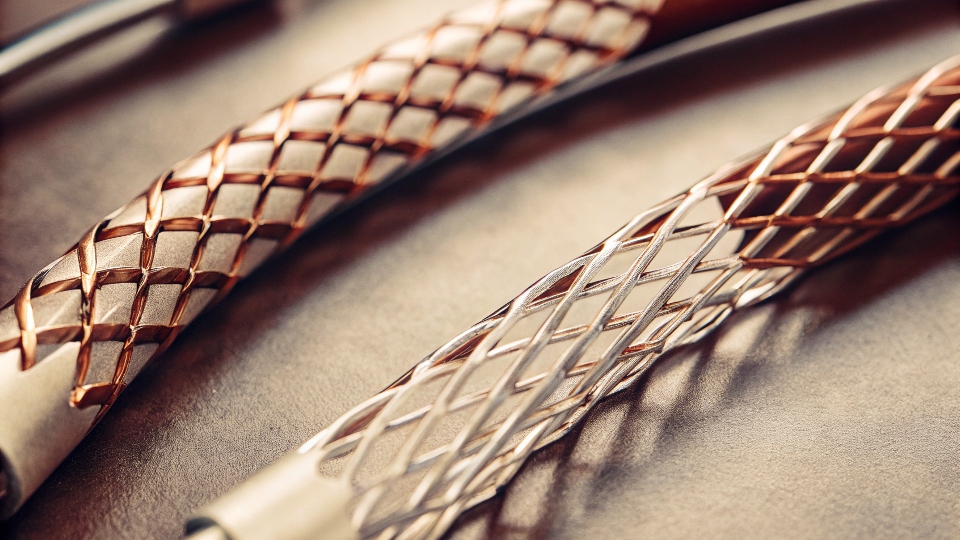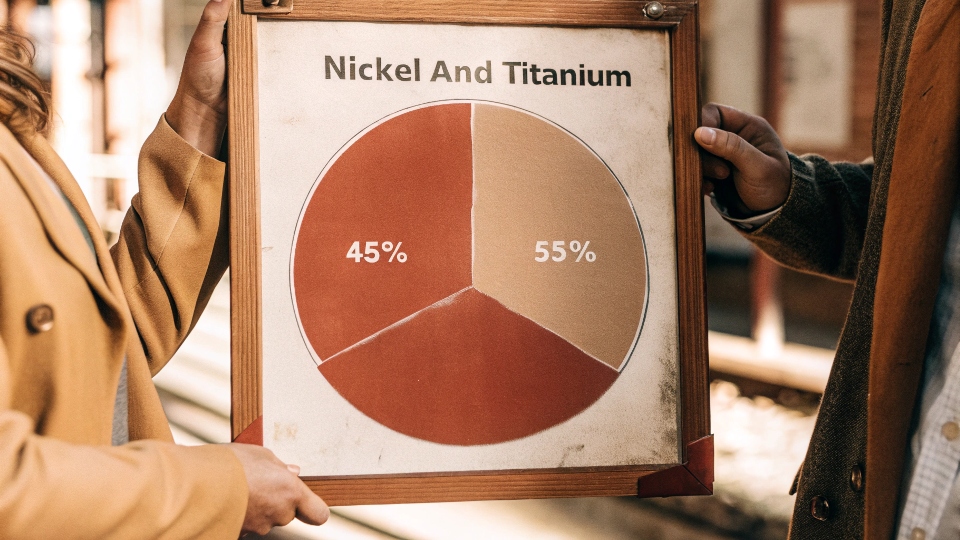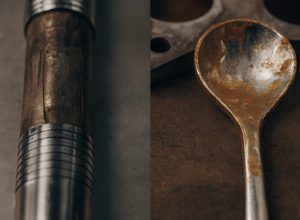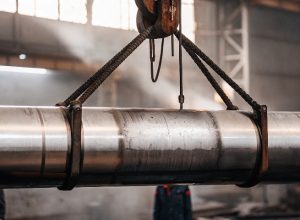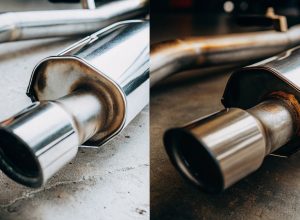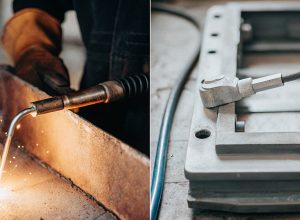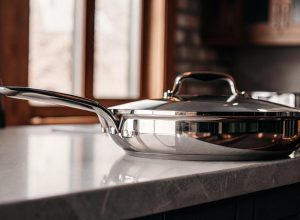Sie sind verwirrt über die Mischung von Titan und Nickel für Ihre Teile? Diese Unsicherheit kann Projekte stoppen. Lassen Sie mich Ihnen diese einzigartige Legierung zeigen und was sie für Sie tun kann.
Ja, eine Titan-Nickel-Legierung, bekannt als Nitinol (NiTi), existiert tatsächlich. Es handelt sich um eine spezielle Formgedächtnislegierung, die nach dem Biegen in ihre ursprüngliche Form zurückkehren kann. Diese einzigartige superelastische Eigenschaft macht sie zu einem unverzichtbaren Werkstoff für moderne medizinische Geräte und Teile für die Luft- und Raumfahrt, die Normen wie ASTM F2063 erfüllen.
Wir haben also bestätigt, dass diese Legierung real und sehr nützlich ist. Aber was genau ist sie und wie unterscheidet sie sich von den Standard-Titanlegierungen, an die Sie vielleicht gewöhnt sind? Ich bekomme oft Fragen wie diese von Produktmanagern wie Lisa. Sie braucht klare, einfache Antworten, um die richtige Entscheidung für ihre Geräte zu treffen. Lassen Sie uns das genauer erklären, damit Sie mit Ihrem Team und Ihren Kunden selbstbewusst über diese fortschrittlichen Materialien sprechen können.
Was ist eine Nickel-Titan-Legierung?
Benötigen Sie für ein neues Produkt ein Material, das gleichzeitig flexibel und stark ist? Grundlegende Metalle lassen sich nur biegen und bleiben gebogen, was für intelligente Geräte nicht gut genug ist. Die Nickel-Titan-Legierung oder Nitinol bietet Superelastizität, eine entscheidende Eigenschaft für Ihre Designs.
Eine Nickel-Titan-Legierung, oder Nitinol, ist ein intelligentes Material. Es ist für zwei besondere Eigenschaften bekannt: Formgedächtnis und Superelastizität. Das bedeutet, dass es sich an eine vorgegebene Form erinnern und in diese zurückkehren kann, wenn es erhitzt wird, oder dass es sich stark verbiegen und wieder zurückfedern kann, ohne dauerhaft beschädigt zu werden.
Nitinol ist mehr als nur eine einfache Mischung aus zwei Metallen; es ist eine intermetallische Verbindung. Das heißt, die Titan- und Nickelatome ordnen sich in einer ganz bestimmten Kristallstruktur an. Diese Struktur verleiht Nitinol seine "intelligenten" Fähigkeiten. Es kann in zwei verschiedenen Phasen oder Kristallformen vorliegen, je nach Temperatur und Belastung, die es erfährt. Ich erinnere mich noch daran, wie ich zum ersten Mal einen Nitinol-Draht in unserem Labor sah. Wir kühlten ihn ab, zerknüllten ihn zu einer Kugel und ließen ihn dann in warmes Wasser fallen. Er schnappte sofort wieder zu einer perfekten geraden Linie zurück. Das ist ein sehr beeindruckender Anblick und zeigt, warum es ein intelligentes Material genannt wird. Dieses Verhalten wird durch strenge Normen wie ASTM F2063 geregelt, insbesondere für medizinische Teile.
Die zwei wichtigsten Eigenschaften verstehen
Die beiden wichtigsten Eigenschaften, das Formgedächtnis und die Superelastizität, ergeben sich aus der Fähigkeit der Legierung, zwischen ihren beiden Phasen zu wechseln.
| Eigentum | Auslöser | Ergebnis | Allgemeines Beispiel |
|---|---|---|---|
| Formgedächtnis | Wärme | Das Material kehrt in eine vorgegebene Form zurück, nachdem es bei einer niedrigeren Temperatur verformt wurde. | Ein durch Körperwärme erwärmter Stent zur Öffnung einer Arterie. |
| Superelastizität | Stress (Biegen/Dehnen) | Das Material kann sich stark verbiegen (wie Gummi) und anschließend wieder in seine ursprüngliche Form zurückkehren. | Flexible Brillengestelle, die sich nicht verbiegen lassen. |
Ist Nickel in einer Titanlegierung enthalten?
Sie spezifizieren eine Titanlegierung für ein Projekt, machen sich aber Sorgen über unerwartete Elemente. Die Zugabe des falschen Elements kann die Korrosionsbeständigkeit oder die Festigkeit beeinträchtigen, was im weiteren Verlauf zu größeren Ausfällen führen kann. Lassen Sie uns klären, wann Nickel in Titanlegierungen enthalten ist und wann nicht.
Standard-Titanlegierungen, wie Reintitan Grade 2 oder Grade 5 (Ti-6Al-4V), enthalten kein Nickel. Nickel ist nur ein primäres Element in bestimmten intelligenten Legierungen wie Nitinol (NiTi). Eine Verwechslung der beiden kann zu schwerwiegenden Fehlern bei der Materialauswahl führen.
Dies ist ein kritischer Punkt, der bei Produktmanagern für viel Verwirrung sorgen kann. Die überwiegende Mehrheit der in industriellen Anwendungen verwendeten Titanlegierungen, wie die, die wir hier in Baoji für chemische Verarbeitungsanlagen herstellen, enthalten kein Nickel. Für diese Anwendungen wird Nickel sogar als Verunreinigung angesehen, die wir sorgfältig kontrollieren, um sie auf einem sehr niedrigen Niveau zu halten. In meinem Werk produzieren wir Tausende von Tonnen Reintitan und Titan-Palladium-Legierungen. Unser Qualitätskontrollteam prüft jede Charge, um sicherzustellen, dass unerwünschte Elemente wie Nickel nicht enthalten sind. Nitinol ist völlig anders. Nickel ist keine Verunreinigung, sondern ein zentraler Baustein, der etwa die Hälfte des Materials ausmacht. Es ist unerlässlich für die Schaffung der einzigartigen Kristallstruktur, die Formgedächtnis und Superelastizität ermöglicht.
Vergleich zwischen Standard-Titan und Nickel-Titan
Ich möchte Ihnen eine einfache Tabelle zeigen, um den Unterschied deutlich zu machen.
| Material | Schlüssel Zusammensetzung | Hauptmerkmal | Gemeinsame Nutzung |
|---|---|---|---|
| Titan Grad 2 | 99%+ Titan | Ausgezeichnete Korrosionsbeständigkeit | Chemierohre, Wärmetauscher |
| Titan Grad 5 | Ti, ~6% Aluminium, ~4% Vanadium | Hohes Festigkeits-Gewichts-Verhältnis | Rahmen für die Luft- und Raumfahrt, Bolzen |
| Nitinol (NiTi) | ~55% Nickel, ~45% Titan | Formgedächtnis & Superelastizität | Medizinische Stents, Aktuatoren |
Wo wird Nickel-Titan verwendet?
Sie haben dieses erstaunliche intelligente Material, aber wo können Sie es tatsächlich einsetzen? Ohne klare Anwendungsbeispiele ist es nur eine Laborkuriosität und keine reale Lösung für Ihr Unternehmen. Schauen wir uns die Schlüsselindustrien an, in denen die Nickel-Titan-Legierung bereits einen großen Einfluss hat.
Nickel-Titan-Legierungen werden hauptsächlich in zwei High-Tech-Bereichen eingesetzt: in medizinischen Geräten und in der Luft- und Raumfahrt. In der Medizin wird sie für selbstexpandierende Stents, flexible kieferorthopädische Drähte und Herzklappenrahmen verwendet. In der Luft- und Raumfahrt wird es für Aktuatoren verwendet, die Solarzellen ausfahren.
Die Eigenschaften von Nitinol machen es zu einem idealen Material für Anwendungen, bei denen Präzision, Zuverlässigkeit und einzigartige Bewegungen gefragt sind. Im medizinischen Bereich ist sein Einsatz lebensverändernd. Ein Stent ist beispielsweise ein winziges Netz, das zum Öffnen einer verstopften Arterie verwendet wird. Ein Nitinol-Stent kann gekühlt und zu einer sehr dünnen Röhre komprimiert werden, die durch den Körper geführt wird, und wenn er die Arterie erreicht, wird er durch die natürliche Wärme des Körpers erwärmt. Dadurch dehnt er sich wieder in seine ursprüngliche, größere Form aus und drückt die Arterie frei. Es muss biokompatibel und stark genug sein, um Millionen von Herzschlägen im Laufe des Lebens eines Patienten standzuhalten. Die Norm ISO 5832-3 bezieht sich speziell auf dieses Material für chirurgische Implantate. Obwohl wir in meiner Einrichtung kein NiTi herstellen, verfolgen wir die Entwicklungen genau, denn die erforderliche Präzision ist unglaublich.
Wichtige Anwendungsbereiche
Die Verwendungsmöglichkeiten von Nitinol gehen über ein oder zwei Produkte hinaus. Hier finden Sie eine Aufschlüsselung, wo Sie es finden können.
| Industrie | Anwendungsbeispiele | Warum wird Nitinol verwendet? |
|---|---|---|
| Medizinische | Stents, kieferorthopädische Zahnspangen, chirurgische Instrumente, Herzklappenrahmen | Biokompatibel, superelastisch für Flexibilität, Formgedächtnis für den Einsatz |
| Luft- und Raumfahrt | Aktuatoren (zum Lösen von Verschlüssen), Flüssigkeitsrohrkupplungen | Leichter als Motoren, hohe Zuverlässigkeit, einfacher Mechanismus |
| Konsumgüter | Flexible Brillengestelle, Bügel für BHs, Telefonantennen | Kann stark gebogen werden und wieder in Form kommen, was die Haltbarkeit erhöht |
Wie hoch ist der Anteil der Nickel-Titan-Legierung?
Sie müssen die genaue Zusammensetzung eines Materials angeben, das Sie in Auftrag geben. Wenn Sie sich bei den Prozentsätzen irren, und sei es auch nur um eine kleine Menge, kann dies zu einem Material führen, das nicht die erwartete Leistung erbringt und kostspielige Verzögerungen oder Ausfälle verursacht. Werfen wir einen Blick auf die genaue chemische Zusammensetzung.
Eine typische Nickel-Titan-Legierung hat einen nahezu gleichen Atomanteil an beiden Elementen. Nach Gewicht entspricht dies etwa 55% Nickel und 45% Titan. Kleine Änderungen dieses Verhältnisses können die Leistung und die Übergangstemperatur der Legierung erheblich verändern.
Dieses spezifische Verhältnis ist der wichtigste Faktor bei der Steuerung der Eigenschaften von Nitinol. Während das Ziel oft ein atomares Verhältnis von eins zu eins ist - ein Atom Nickel für ein Atom Titan -, ist der Gewichtsprozentsatz anders, weil Nickelatome schwerer sind als Titanatome. Aus diesem Grund werden in den Spezifikationen etwa 55% Nickel nach Gewicht angegeben. Diese Waage ist unglaublich empfindlich. Eine Änderung des Nickelgehalts um nur 0,1% kann die Aktivierungstemperatur der Legierung um bis zu 10 °C verändern. Dies ist von entscheidender Bedeutung für medizinische Geräte, die so konstruiert sein müssen, dass sie genau bei der menschlichen Körpertemperatur (etwa 37 °C) aktiviert werden. Ein Kunde schickte uns einmal eine Probe eines defekten medizinischen Teils zur Analyse. Mit Hilfe der energiedispersiven Röntgenspektroskopie (EDS) unseres Labors bestätigten wir, dass die Zusammensetzung 54,8% Nickel betrug, was genau der Norm ASTM F2063 entsprach. Dies sagte uns, dass das Material an sich korrekt war und der Fehler wahrscheinlich auf das Design des Teils und nicht auf seine Chemie zurückzuführen war.
Verstehen von Atom- und Gewichtsprozentsätzen
Für Ingenieure und Produktmanager ist es nützlich zu wissen, warum diese beiden Prozentsätze unterschiedlich sind.
| Messung | Nickel (Ni) | Titan (Ti) | Warum es wichtig ist |
|---|---|---|---|
| Atomarer Prozentsatz | ~50% | ~50% | Dies beschreibt die ideale 1:1-Atomkristallstruktur für den besten Formgedächtniseffekt. |
| Gewicht Prozentsatz | ~55% | ~45% | Diese Angaben werden für die Bestellung und Überprüfung von Rohstoffen verwendet, da die Zusammensetzung auf diese Weise gemessen wird. |
Schlussfolgerung
Die Nickel-Titan-Legierung ist das intelligente Material Nitinol. Es unterscheidet sich stark von herkömmlichem Titan und ist für fortschrittliche Anwendungen in der Medizin und der Luft- und Raumfahrt unerlässlich. Das Wissen um seine einzigartigen Eigenschaften ist entscheidend.

